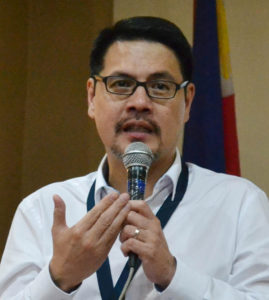
This is the third part of a four-part article outlining the major problems confronting the Philippine Bureau of Customs; the previous efforts to reform and modernize the agency; key issues and concerns that continue to confront it; areas for policy and institutional reforms; and the challenges facing the new administration. This article also provides recommendations for specific policy, regulatory, and operational programs, both in the immediate and the medium terms.
This article was also presented at 11th World Customs Organization Partnerships in Customs Academic Research and Development Conference in Manila from 27-29 September 2016.
Previous BOC Reform Efforts
Since October 2013, significant changes have been made, albeit not enough given the scope of reforms needed to be implemented. Outlined below are some reforms effected in BOC under the previous customs administration:
- New rules have been issued and implemented requiring strict standards for hiring and promoting customs personnel. Applicants who have relatives within the fourth (4th) degree of consanguinity currently employed in the agency can no longer apply.
- Paper documents for import transactions have been reduced by as much as 70%. Of the approximately two hundred thousand (200,000) import transactions per month, two-thirds (2/3) are now being filed electronically, although with parallel manual processing still in place.
- Work on the adoption and implementation of the Revised Kyoto Convention has started with the passage of the Customs Modernization and Tariff Act (CMTA), and the issuance of its implementing rules and regulations is intended to result in the simplification of existing customs processes.
- Most existing rules and regulations are now available online, including those issued by other government agencies on regulated goods.
- While the automation program has been delayed by pending court cases, efforts have been made to gradually address over-capacity of the present system which has previously resulted in much down time and slow down.
- Additional personnel have been hired. Overtime pays are now provided to offices rendering 24/7 service.
- Administrative penalties for minor issues have been reduced in certain cases.
- The existing trusted trader program (Super Green Lane Program) has been expanded, its membership now 150 from 80. Most of these members are among the Top 1000 importers in the Philippines.
- Obviously, a major part of the reform program requires a fully functional and robust automated customs operating system. Without this, trade facilitation will be hampered, revenue collection will remain inefficient, and management of operations in all ports and airports nationwide will continue to be problematic.
Going Forward – Focus Areas
Enhancing border enforcement and revenue collection while promoting trade facilitation do not necessarily conflict with each other.The present administration should build on the groundwork laid down by the previous administration. Major reform efforts should focus on the following areas:
- Paperless processing on mostly compliant companies, which covers as much as 80% of total import transactions. The remaining 20% will be subject to strict controls including physical examination or non-intrusive examination such as x-ray scanning;
- Paperless processing of export transactions, including the issuance of certificates of origin;
- Profiling of importers and other stakeholders upon registration or accreditation to ensure that these entities are ‘ongoing concerns’ and ‘auditable’;
- System allowing for the remote and central access of x-ray facilities and designated examination areas for physical inspections, and absorption of x-ray offices in the ports and airports by the concerned collection districts;
- Centralization of the assessment function, at least for the 80% largely compliant paperless import transactions;
- Organization and building-up of post clearance audit capability;
- Rationalization of organizational structure, including possible conversion to a government-owned and controlled corporation to address, among others, concerns on poor wages and recruitment of qualified personnel;
- Expansion of the load port survey program for certain commodities or country of origin on a short-term basis;
- Review and overhaul of existing customs processes in line with the CMTA;
- Define and delineate customs police functions into the following operational areas: intelligence, fraud investigation, enforcement, and border control;
- Develop an enhanced risk management system that will link all available information coming from various customs units (accreditation, assessment, liquidation, and post clearance audit) and external sources;
- Establishment of a Tax Academy (for BOC and the Bureau of Internal Revenue); and
- Enhanced coordination with internal revenue authorities on VAT payments to ensure the collection of output VAT for undervalued goods.
For part IV of this article, click here. Agaton Teodoro O. Uvero is an international trade, customs (indirect tax) and supply chain expert. He provides advisory and training services to top corporations and industry associations. For questions, email him at agatonuvero@customstrade.asia or agatonuvero@yahoo.com.












